

Our driver kindly (and unwillingly) accepted to drive us on a small island before sunrise. He left us a few meters away from the island. It was pitch dark. We were wondering why he didn’t come closer to the shore when our feet sunk deep into the salt crust. Fair enough, the 4×4 would have gotten trapped there….But good to know for later : we better watch where we put our feet ! The salt crust may not be as strong as it seems …
So we arrived on the small coral island with wet boots, wet socks and wet feet. But at least it was just the 2 of us, ready for sunrise and first look on the Salar, alone on the island. Alone but surrounded by hundreds of cactus. So we took our time to find our favorite spot, the most interesting cactus to have in the foreground, and we waited for the first lights of the day.

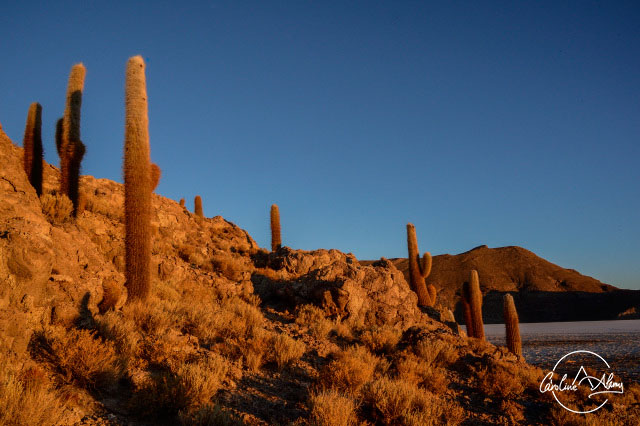
Beautiful early morning lights
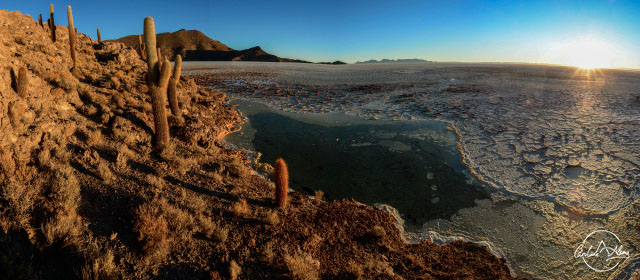
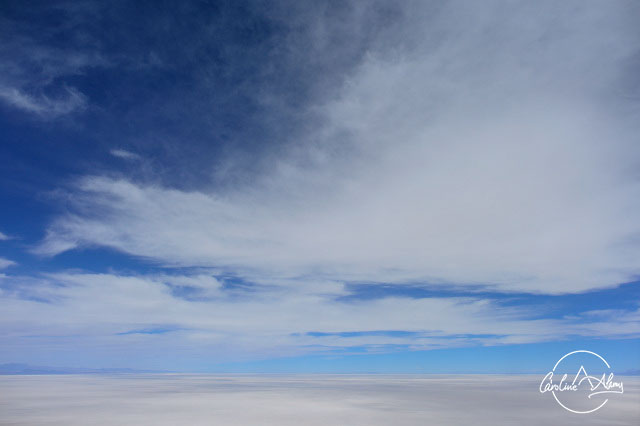
Once the sun is out, we fully discovered the pure white plain of salt. We went there in August, so in Winter time, which is also the dry season. The flats were cracked into honeycomb-shape, quite interesting to capture with the camera. It gives a weird feeling to walk around on them. The ground looks like snow but it is as strong as a rock. It cracks under your feet. Salt crystals look like white grains of sand but they are all firmly stuck together. Almost impossible to remove just a tiny piece of it.

Honeycomb salt flats
During the rainy season (December-April), the water remains at the surface and transforms the flat into a large mirror. The landscape would be completely different, as well as the experience.
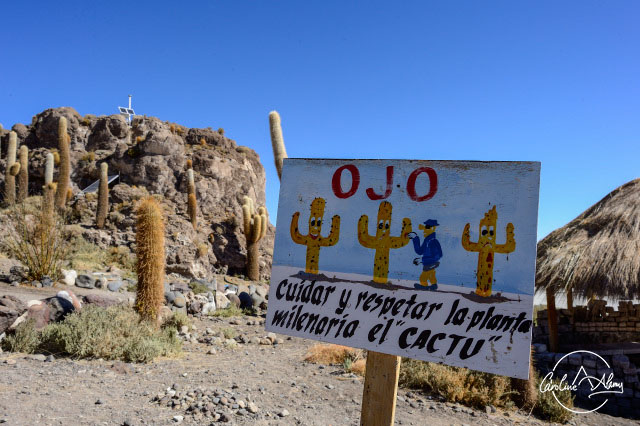


That’s pretty much the only main trace of life we have seen when we were on the salt flats. However, if you are lucky, you can also meet in this area foxes, and pink flamingos (early November).
Early enough came the time for the famous perspective photos. I hadn’t expected those shots to be so difficult to get! And we also hadn’t planned as much as we should have. We struggled with the focus, with the depth, we were getting tired really fast, the sun was really harsh. It was around 2 pm. But at least noone else was around and it was fairly simple to get the background we wanted without any disturbance (aka cars or other tourists). Maybe once in a while a jeep would drive really far away. But that’s pretty much it. It’s good we had our guide with us who knew some tricks. And he helped us kicking off the shooting session.

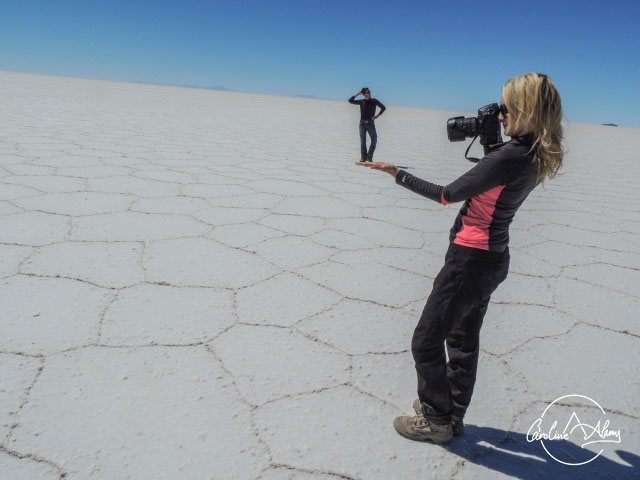

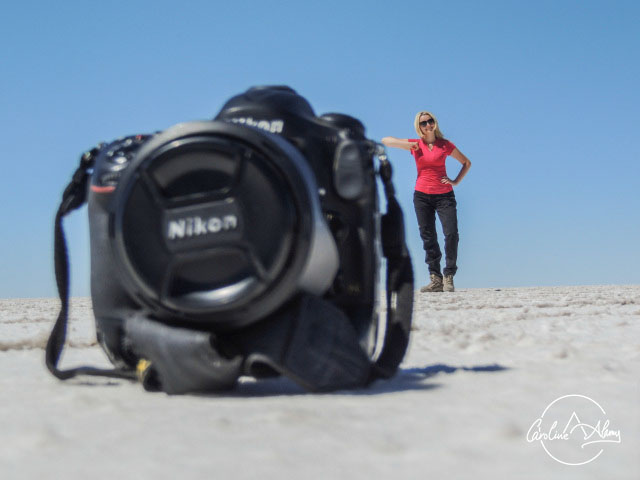
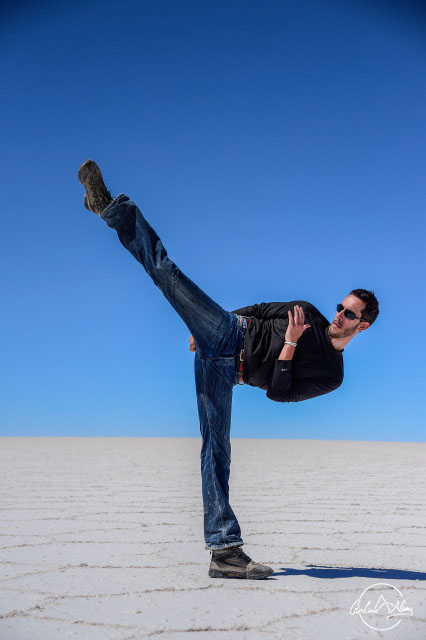


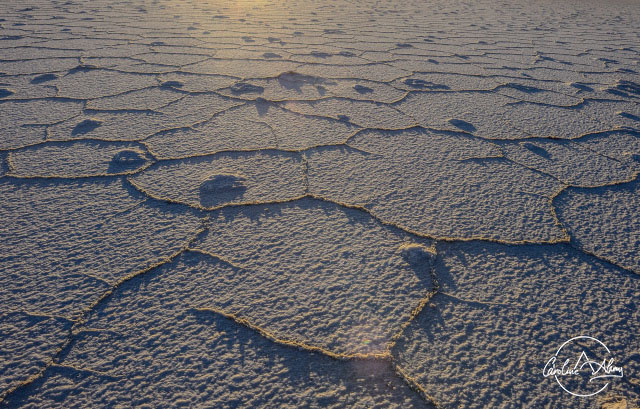
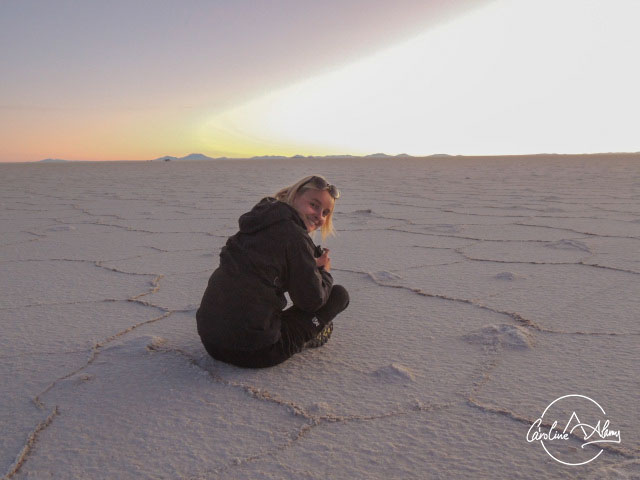
Not only was it good and refreshing after a long day in the car, but our guide put some bolivian music and started to dance. He taught us the traditional moves and, in the blink of an eye, we were dancing with him.
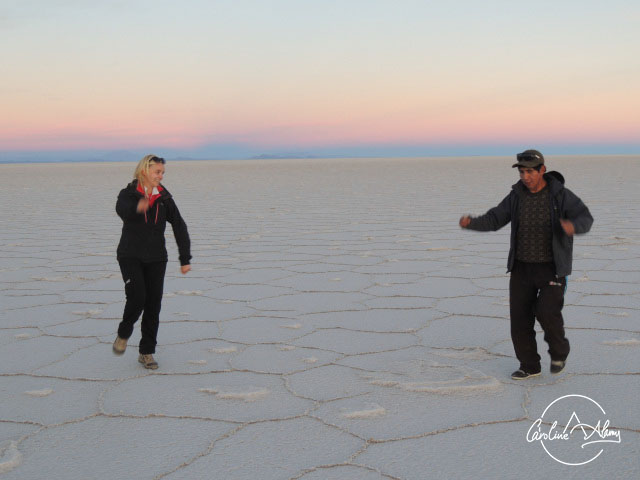
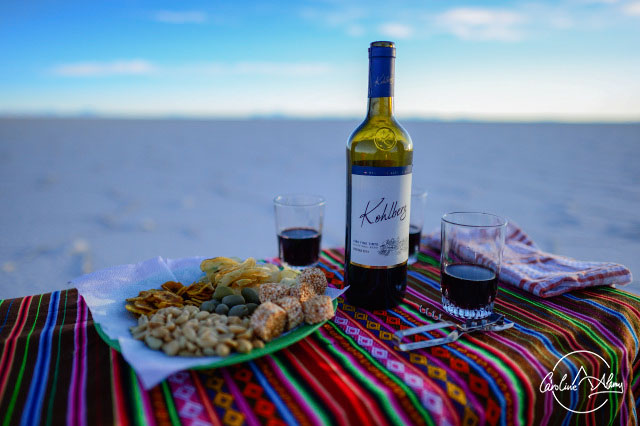

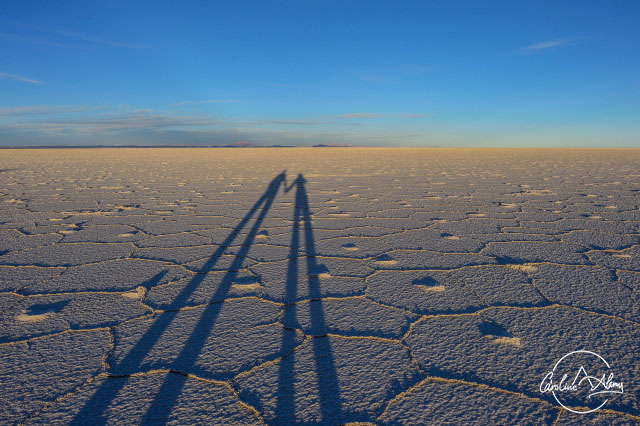
Loved how tall our shadows turned at the end of the day!
If you want to see more pics from Bolivia, this is here.
Quick Photo Tips
If you visit the Salar, you likely want to get some perspective photos. While they look cool, they are not as easy as they may seem :
- Plan ahead : you can be super creative here, but you may need the right props. If you look on the internet, you will find plenty of ideas. Some people are using toys, bottles etc. If you have a specific set up in mind, bring the items with you as it will be difficult to find them once you are out there ! Here are some ideas if you need inspiration.
- Shoot close to the ground : it may be difficult – it is hot, the glare of the sun is disturbing etc. – but it will be easier to get the perspective when using props. Don’t hesitate to lie down on the salt !
- You may need to place the 2 subjects really far from each other so the perspective works better. I was quite surpised by how far I had to go to make it work ! So one subject should be as close as possible from the camera, and the other subjects to be further in the distance.
- The background : It should be only the landscape. Change the frame if you see cars or other people. That would ruin the effect.
- The more the merrier : Someone to take the picture + at least one model + probably someone to help with the prop (water dropping etc.). It will be challenging to do that on your own. Your guide/drive may be experienced and turn to be a valuable photo assistant !
Quick Travel Tips
- Weather is more favorable between July and October and most places will be open. While visiting in the rainy season seems quite attractive for the « mirror effect », our guide-driver recommended us to avoid that time of the year. He mentioned it is much more dangerous as you can get lost easily – to the point that he would not accept to drive any tourist there. On top of that, Isla Incahuasi is inaccessible. If you want more details on when to visit and see how the « mirror effect » looks like, this article is quite useful.
- You may experience altitude sickness. When we reached the Salar, we had been in the area for 10 days already so we felt relatively ok. However, when we landed at the beginning of our trip, we struggled a lot (difficult to breath even for a small and easy walk etc.). It took us 4 days to adjust. So ideally, try to gradually adapt at heights 2-3 days before visiting the Salar or before hiking at high altitudes.
- Days are warm but nights are (super freaking) cold. As soon as the sun is out, it is all about sunscreen and water. Don’t forget to drink a lot of water while you walk around the salar – especially when you do the perspective/horizon pictures : it may take a while, you may not feel the sun, but it is here and will kick you badly if you forget (let’s avoid getting sunstroke). While at nighttime…this is one of the trips were I was freezing the most ! Despite the layers or clothes. So make sure to bring scarf, gloves, thin layers, warm socks. Seriously.




0 Comments